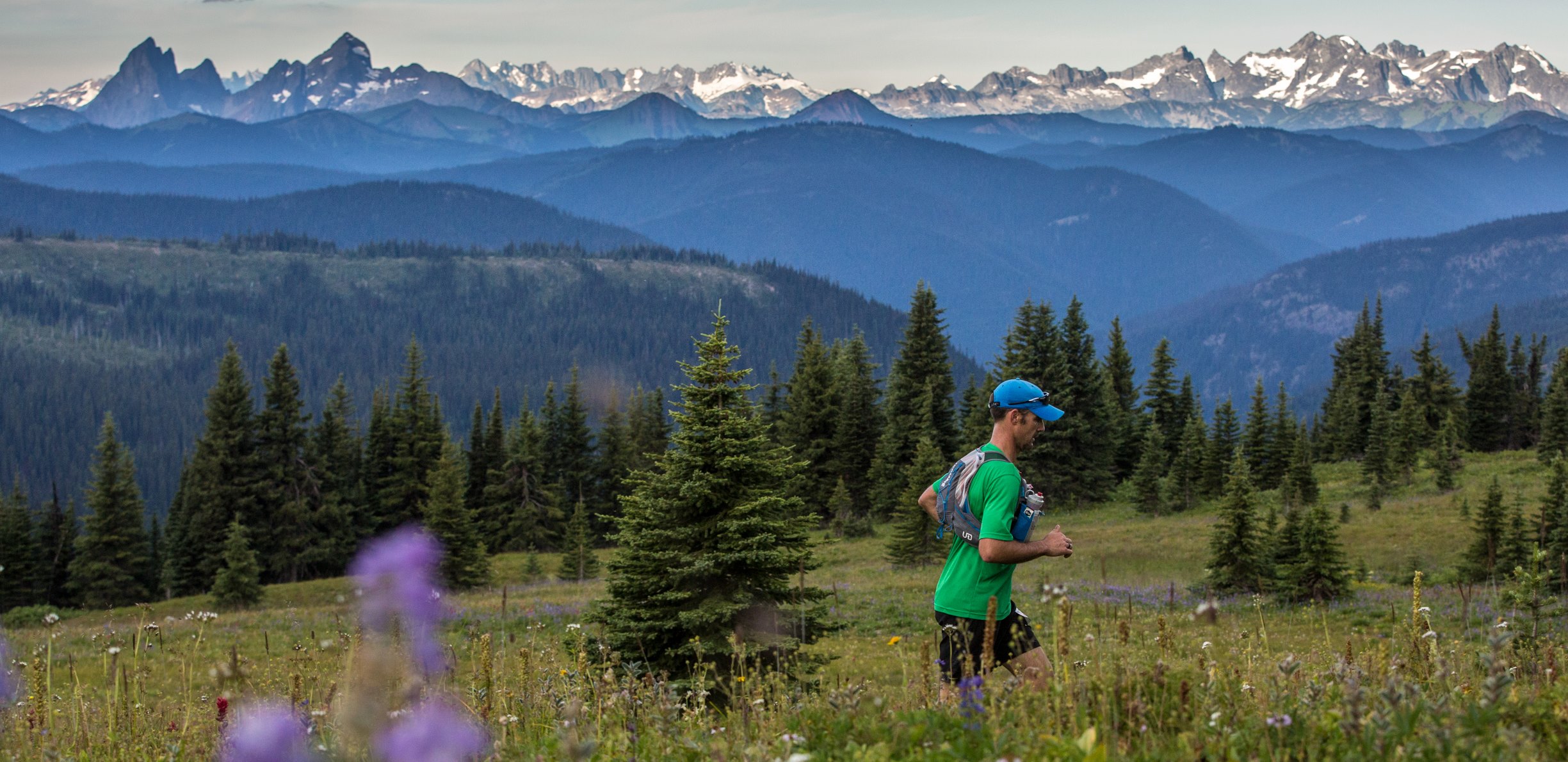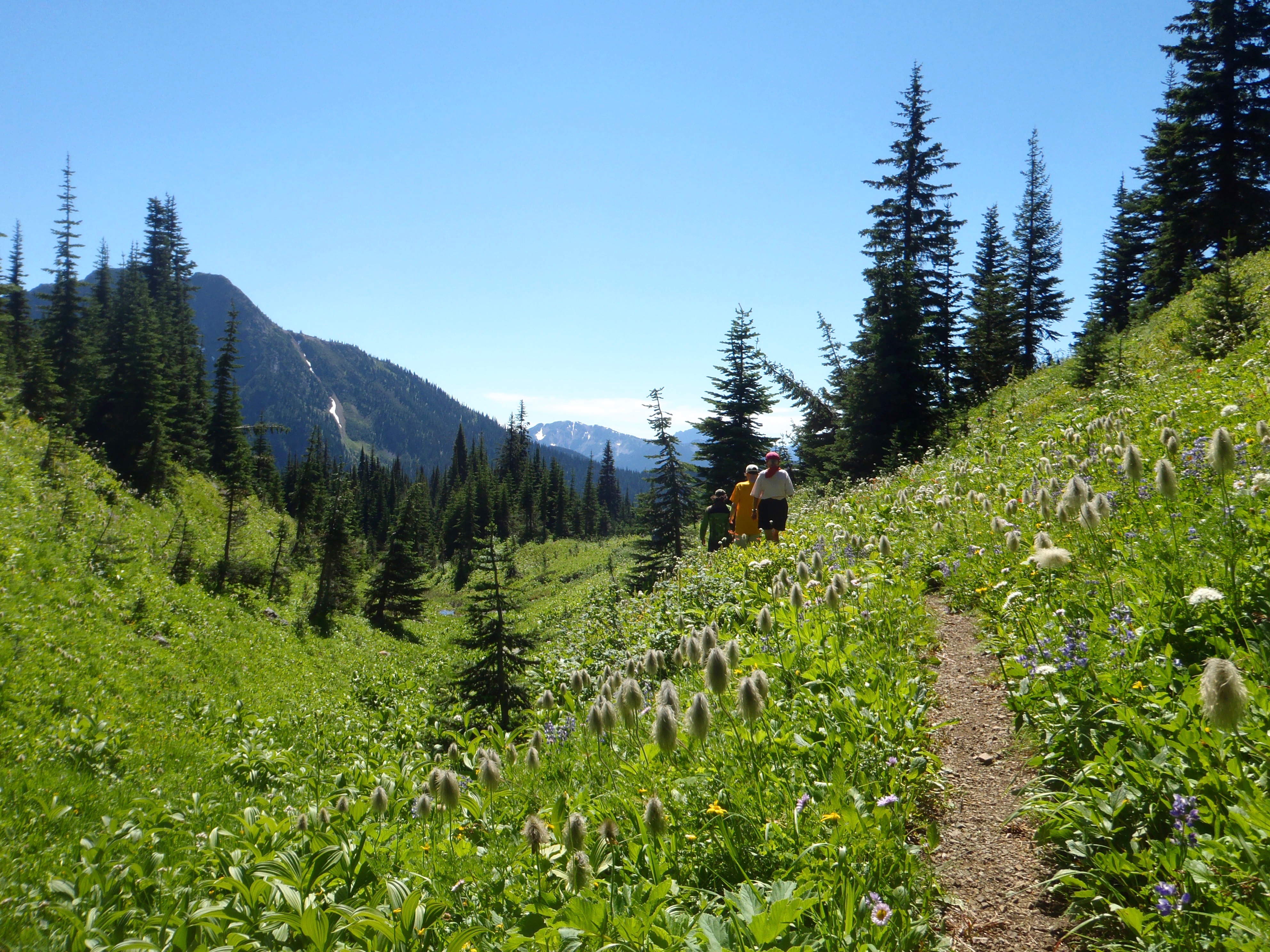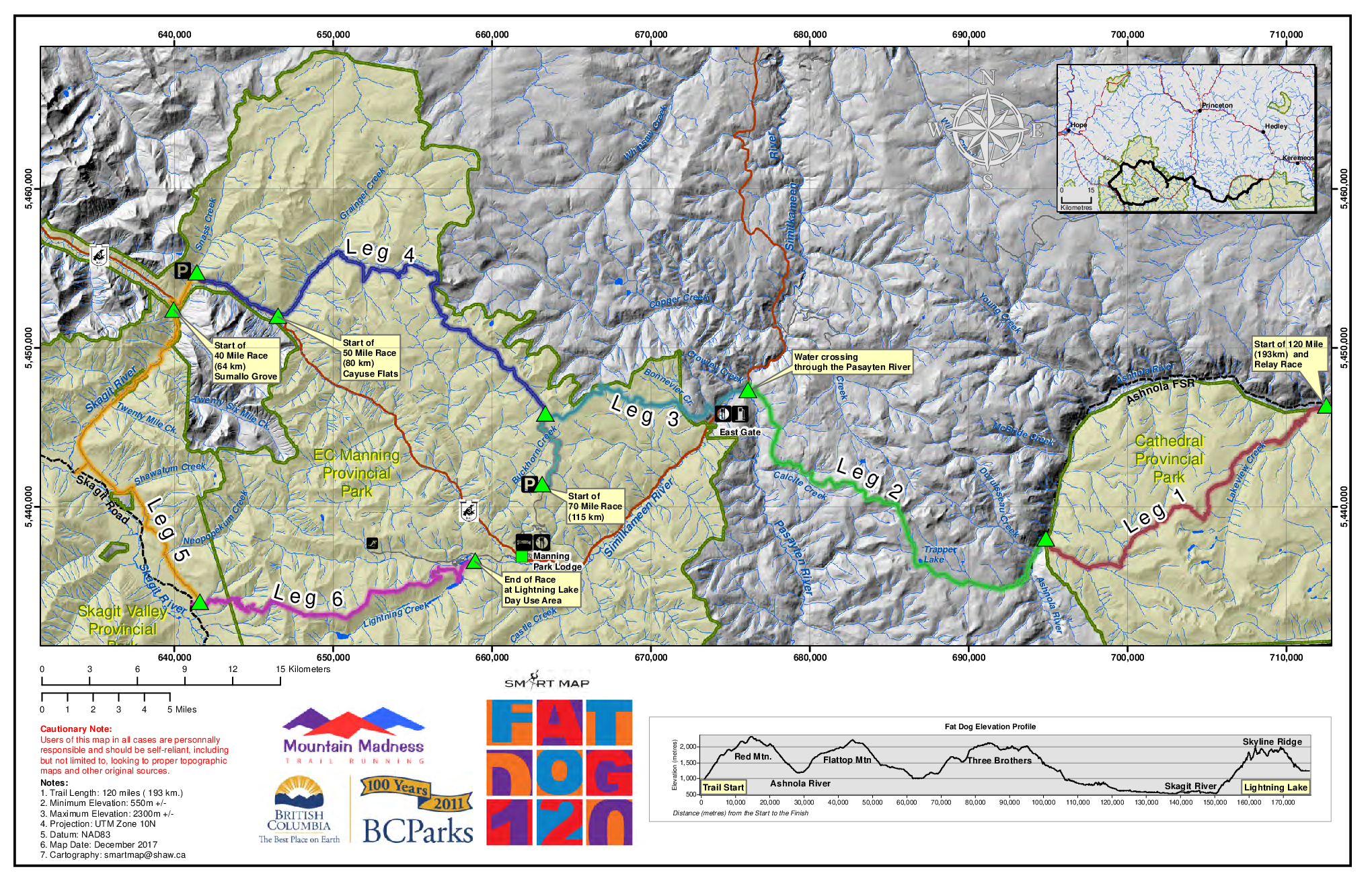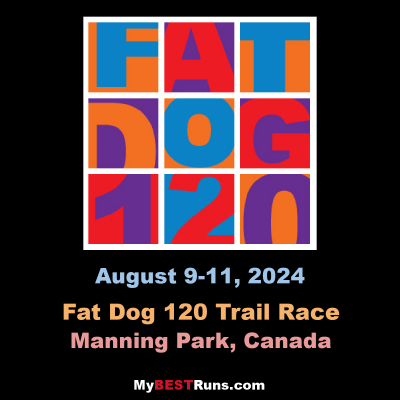Sunday August 9th, 2026
Manning Park, Canada
Distance: 120 miles
Offical Race Web Site
Most scenic ultra race in Canada. Join us for a challenging point to point race that straddles 3 stunning provincial parks in British Columbia, Canada in the Cascade Mountains. Just short of Everest for elevation gain; Fat Dog 120 mile is 8682 meters, Everest is 8848 meters.
Stunning alpine views, meadows of wildflowers, good mix of technical and non-technical trails, very little forest service road, point to point, challenging profile, sumptuous aid stations, enthusiastic volunteers, and a lake at the end for soaking. SERIOUSLY SCENIC.
Difficulty
Challenging race due to climbs. Technical and non-technical mix. One river crossing for 120 mile and relay (has current, ropes provided). 120 mile race has elevation gain of 8682 meters, just short of Everest at 8848 meters. 120 mile racers have said that the only harder race is Hardrock.

| Division | Time | Name | Age | Home |
| Male | 25:13:48 | PauRius | 30 | Chilliwack |
| 2nd Male | 28:20:05 | ToddMarwick | 32 | North Vancouver |
| 3rd Male | 29:18:17 | MikeSidic | 41 | Vancouver |
| 4th Male | 32:12:26 | ZacharySzablewski | 34 | Ravensdale |
| Female | 34:10:33 | JessicaTemple | 32 | Chilliwack |
| 2nd Female | 35:21:18 | TaraBassili | 34 | North Vancouver |
| 3rd Female | 35:48:25 | MeredithWilson | 44 | North Vancouver |
| 4th Female | 37:56:38 | SophiaKlein | 45 | Cape Town |
| Division | Time | Name | Age | Home |
| M 40-49 | 29:18:17 | MikeSidic | 41 | Vancouver |
| M 50-59 | 34:19:28 | JedGrieve | 50 | Qualicum Bay |
| M 60-69 | 42:28:34 | ColinBerry | 60 | Huonville |
| F 40-49 | 35:48:25 | MeredithWilson | 44 | North Vancouver |
| F 50-59 | 41:27:48 | AllisonJacquemont | 50 | Westmount |
| F 60-69 | 47:08:04 | SusanLowe-Wylde | 63 | Blairmore |

120 miler
The 120 mile event is considered one of the top 9 toughest ultras in the world by Outside Online. Difficult point to point trail race with elevation gain(8672.7 metres)just less than Everest (8848 metres). Crosses three stunning provincial parks and one recreational area in British Columbia, BC: Cathedral Provincial Park,Cascades recreational area, E.C. Manning Provincial Park and Skagit Valley Provincial Park. Scenic, technical and non-technical trails, one river crossing, and sumptuous aid stations. Well rewarded for climbs with top of the ridge vistas. Bring a camera. Demanding final leg to finish. All racers must be prepared for a challenging route. Starts near Keremeos, finishes at beautiful Lightning Lake.
70 miler
Challenging point to point trail race across two stunning provincial parks in British Columbia, BC: E.C. Manning Provincial Park and Skagit Valley Provincial Park. Scenic, technical and non-technical trails and sumptuous aid stations. Well rewarded for climbs with top of the ridge vistas. Demanding last leg to finish. All racers must be prepared for a demanding route. Starts and finishes in E.C. Manning Provincial Park. Finish at beautiful Lightning Lake.
Relay
The relay follows the same route as the 120 mile race but has one additional out and back. Point to point trail race across three stunning provincial parks and one recreational area in British Columbia, BC: Cathedral Provincial Park, Cascades recreational area, E.C. Manning Provincial Park and Skagit Valley Provincial Park. Scenic, technical and non-technical trails, one river crossing, and sumptuous aid stations. Well rewarded for climbs with top of the ridge vistas. Demanding finish. All racers must be prepared for a challenging route. Teams provide their own transportation to exchange points. Starts near Keremeos, finishes at beautiful Lightning Lake.
Legs vary from7 to38 km. Minimum2 racers, maximum9 racers. Team members can combine legs if desired, for example, one person can do relay legs 5 and 6.
50 miler
Challenging point to point trail race across two stunning provincial parks in British Columbia, BC: E.C. Manning Provincial Park and Skagit Valley Provincial Park. Scenic, technical and non-technical trails and sumptuous aid stations. Well rewarded for climbs with top of the ridge vistas. Demanding last leg to the finish. All racers must be prepared for a challenging route. Starts and finishes in E.C. Manning Provincial Park. Finish at beautiful Lightning Lake.
40 miler
Point to point trail race across two stunning provincial parks in British Columbia, BC: Skagit Valley Provincial Park and E.C. Manning Provincial Park. Scenic, technical and non-technical trails and sumptuous aid stations. Well rewarded for climbs with top of the ridge vistas. Demanding last leg to the finish. All racers must be prepared for a challenging route. Starts in Skagit Valley Provincial Park and finishes in E.C. Manning Provincial Park. Finish at beautiful Lightning Lake.
About the course
120 Mile and Relay
120 mile and relay do all the legs shown above.
70 Mile Route
Start atBlackwall Peak to Bonnevier junction. Then do Legs 4 to 6 above.
Gain = 4055 m. Loss= 4800 m.
50 Mile Route
Start at Cayuse Flatsand go to Cascade. Then do Legs 5 and 6 above.
Gain = 3271 m. Loss = 2810 m.
40 Mile Route
Start at Sumallo Grove, go through Skagit and then do Skyline. 40 mile route.
Gain = 2792 m. Loss = 2152 m.
Relay Legs
Descriptions: relay Leg 1 Cathedral, relay Leg 2 Ashnola, relay Leg 3 Trapper, relay LEg 4 Bonnevier, relay Leg 5 Heather, relay Leg 6 Cayuse Flats, relay Leg 7 Cascade, relay Leg 8 Shawatum, and relay Leg 9 Skyline.







